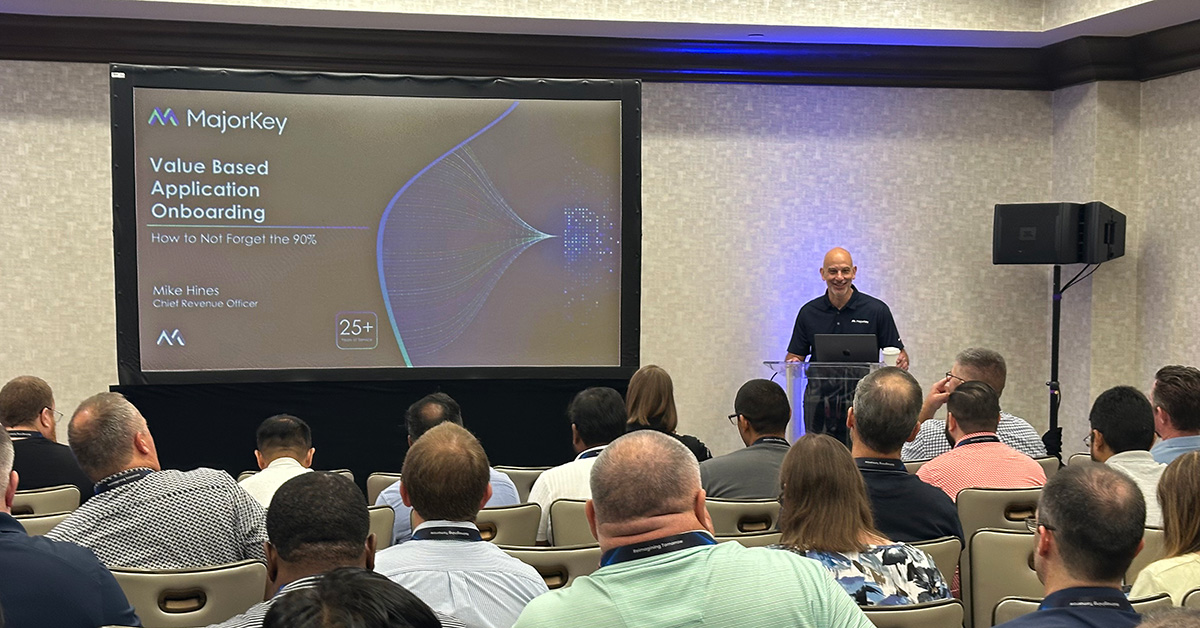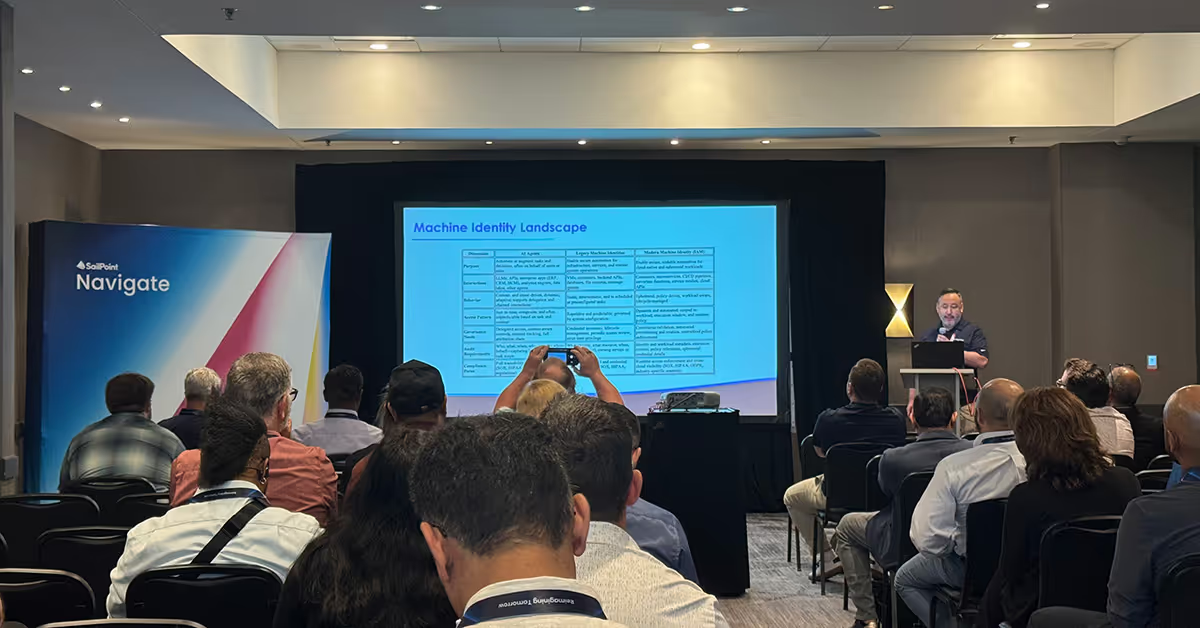Transitioning Beyond MIM Revisited, Part 1: The Current MIM Landscape
November 10, 2025
|
Duration:
5
min READ

In 2022, we noted that Microsoft Identity Manager (MIM) was in its extended support phase, giving organizations time to plan their cloud migration. Fast forward three years, and while the conversation has evolved—MIM remains a cornerstone for many hybrid identity environments.
The move from MIM is not merely a technical upgrade, but a strategic investment to secure and future-proof the organization's identity foundation.
Where MIM Stands Today
MIM's official end-of-life is set for January 2029, as confirmed on the product lifecycle page. Many organizations have already moved to the cloud to embrace zero trust security model, while others are still exploring their transition options. Extended support remains available, and MIM continues to serve as the backbone for managing on-premises identity data in tandem with Microsoft Entra ID.
MIM SP3: Extending Value for Hybrid Environments
For those not ready to transition away from MIM, there’s good news: Service Pack 3 (SP3) is slated for release in January 2026, with substantial compatibility updates and quality-of-life improvements. Key updates include support for Windows Server 2025, SQL Server 2022, Exchange Server 2019, SharePoint Server Subscription Edition, and Azure SQL with managed identity authentication. SP3 also introduces ADFS single sign-on (claims-based authentication) to the MIM Service and Portal components.
These enhancements show Microsoft’s ongoing, if measured, investment in keeping MIM secure and operational within modern hybrid infrastructures. If history is any guide, this kind of update often extends support timelines even further, though no official announcements have been made yet.
Event-Driven Identity: From MIM Workflows to Microsoft Entra ID Governance
MIM’s event-driven Portal workflows have long enabled automation triggered by attribute changes, approvals, or lifecycle events. This design principle, which once set MIM apart, is now foundational in Microsoft’s modern cloud-first identity stack.
Today, Microsoft Entra ID Governance Lifecycle Workflows (LCW), Access Packages, and Access Reviews deliver event-based provisioning and governance at a scale previously unattainable. Organizations can now orchestrate onboarding, transfers, and offboarding through cloud-native triggers that match, and in some cases surpass, MIM’s capabilities.
Meanwhile, tools like Azure Data Factory provide a way to do stateful data processing, further empowering administrators to model identity flows and transformations, echoing the familiar MIM Synchronization Engine experience. Together, Microsoft Entra and Azure components make cloud-first provisioning more viable than ever.
Charting Your Path Forward
Where does this leave organizations still running MIM today?
- On MIM 2016 SP2? The upcoming Service Pack 3 (SP3), slated for release later this year, is worth serious consideration. With substantial compatibility updates and quality-of-life improvements. Highlights include support for Windows Server 2025, SQL Server 2022, Exchange Server 2019, SharePoint Server Subscription Edition, and Azure SQL with managed identity authentication. SP3 also brings ADFS single sign-on (claims-based authentication) to the MIM Service and Portal components.
- Planning your exit from MIM? The Microsoft Entra ecosystem now offers robust replacements for most core functions—particularly provisioning, entitlement management, and review processes.
- Operating in hybrid mode? SP3 buys you time to plan a deliberate, phased migration, leveraging both MIM and Microsoft Entra capabilities.
Looking Ahead
Microsoft’s message is clear: MIM still matters, but its future is finite. The focus is now on Microsoft Entra’s identity governance and provisioning tools, which offer cloud-native flexibility, API extensibility, and simplified administration, features that once required custom MIM workflows and sync rules. Additional benefits to migrating include:
- Business Continuity & Agility: Move to a modern, supported platform that accelerates cloud adoption and time-to-market with native provisioning and single sign-on for thousands of SaaS apps.
- Enhanced Security: Gain a Zero Trust architecture with conditional access, AI-driven identity protection, and dynamic controls like just-in-time access via privileged identity management (PIM).
- Operational & Financial Efficiency: Eliminate on-premises infrastructure costs, reduce maintenance and specialized labor, and lower IT overhead through self-service and automated lifecycle management.
If you’re exploring how to replicate or modernize MIM provisioning with Microsoft Entra’s Provisioning API and related technologies, stay tuned for future installments in this blog series.
Final Thoughts
MIM continues to be a resilient, enterprise-grade identity solution, but 2025 marks a tipping point. With SP3’s modernization updates and the rapid evolution of Microsoft Entra ID Governance, organizations now have real choices: extend, coexist, or evolve.
No matter your timeline, it’s time to plan for a cloud-first identity future—not because MIM is disappearing tomorrow, but because the next generation of tools is ready for what’s next.
Request a complimentary migration consultation with a MIM and Microsoft Entra identity expert.
FAQs
Can MIM SSPR be migrated to Microsoft Entra ID?
Yes, and if you haven’t already, you should! Microsoft Entra ID Premium now includes self-service password reset (SSPR) for both cloud and hybrid users. With password writeback enabled in Microsoft Entra Connect, users can reset both on-premises AD and cloud passwords through a unified experience. Microsoft Entra’s SSPR offers stronger MFA enforcement, more policy options, and audit integration with Microsoft Entra ID Governance.
Can MIM group management be migrated to Microsoft Entra ID?
Mostly. Microsoft Entra ID now provides dynamic and rule-based group management, replacing most MIM Portal functions. MIM can still populate attributes for dynamic cloud groups, ensuring hybrid continuity. Use Microsoft Entra Cloud Sync to write groups back to on-premises (this functionality is not in Microsoft Entra Connect).
Can MIM provisioning be migrated to Microsoft Entra ID?
Yes, depending on your environment. Microsoft Entra’s provisioning engine supports SaaS and on-premises apps via SCIM, Graph API, and ECMA2 connectors. It’s codeless, event-driven, and integrated with Lifecycle Workflows, covering 80–90% of MIM provisioning needs without custom code.
Can Microsoft Entra ID handle multiple sources of truth (like HR systems) like MIM?
Partially. MIM’s sync engine excels at aggregating multiple authoritative sources. However, Microsoft Entra ID now integrates with Workday, SAP SuccessFactors, and other HR platforms. Azure Data Factory and Logic Apps enable more complex cloud data orchestration.
Can MIM Portal workflows be replaced by Microsoft Entra ID functionality?
Yes, in most cases. Lifecycle Workflows, Access Packages, and Access Reviews now replicate many MIM’s event-based processes. For highly customized workflows, Power Automate and third-party IGA platforms can fill the gaps.

Authors

Workforce Identity
Identity Governance
Advisory
Deployment and Integration
No items found.
.svg)



















.svg)
